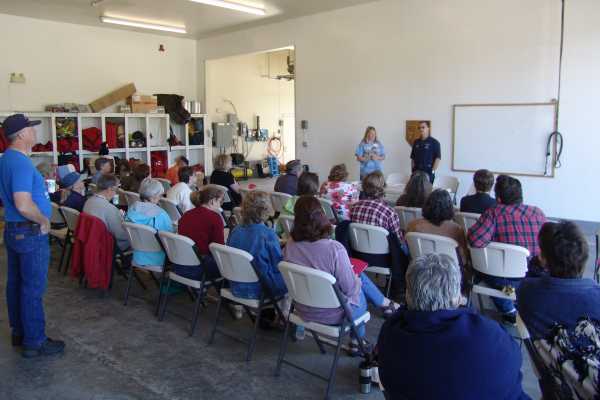|
This feature is a continuation of Part Four.
To be effectively utilized, large animal responders need to be recognized by the state and local agencies who may be in control of emergency incidents as credible responders having known capabilities and who will conduct themselves responsibly during emergency events. Some volunteers may choose to affiliate with Search and Rescue, Community Emergency Response Teams (CERTs) or other volunteer entities already affiliated with the government. Volunteers who are affiliated with stakeholder groups or nongovernmental organizations (NGOs) may need to prove their worth in order to be included in pre-incident planning for major emergencies.
One effective means to become recognized is to participate in disaster related training with these agencies. When volunteers present themselves as having completed appropriate on-line FEMA/EMI courses that address large animal rescue and the Incident Command System (ICS,) and when they demonstrate a willingness to proactively develop additional knowledge and skills by taking advantage of agency outreach opportunities, such coherently organized volunteer groups start to become recognized emergency resources. In some regions they even become depended upon for their services.
In some jurisdictions disaster training is part of customary agency outreach. In others the volunteer responders may need to encourage agency administrators to provide or facilitate training so that the volunteer response group can be included as a recognized emergency resource.
A quick index of FEMA/EMI and related on-line courses can be found by visiting
Recommended EMI & Responder Safety On-Line Courses.
Large animal volunteers may find themselves in the midst of a variety of
local, state and even tribal and federal responders. The volunteers need to know
how such incidents are managed and how they fit into the incident's action plan.

Local fire and law enforcement officials and/or a jurisdiction's Emergency Manager should be able to provide guidance as to what training volunteers should have for these agencies to become comfortable in requesting their services. Credible training standards, coupled with realistic performance standards, can significantly improve the volunteer group's perceived and actual credibility.
|
|
Elements to Consider Developing
|
- What will the response group's legal relationship be to local and state emergency agencies and emergency operations centers?
- Where does the response group fit in overall strategic planning and emergency incident plans?
- How should the group be included in local and regional Emergency Operations Plans?
- Will the group's volunteers be considered as being disaster workers, and if so, in what capacity and under which disaster protocols?
- What volunteer training standards will need to be met?
- How will training address volunteers who have differing areas of interest (i.e., field responses, logistics, sheltering assistance, etc?)
- How will volunteers with different documented skill sets be recognized in the field?
- What volunteer group - emergency services joint training should be developed?
- How will responses be configured (i.e., single resources, strike teams, task forces, animal rescue group, etc.) and what are the criteria for determining which type of response is appropriate for an incident?
- How will the response group be alerted and dispatched?
- How will the dispatch center communicate with responders?
- How will responders communicate with Incident Command superiors and other critical element contacts such as shelter supervisors when working at incidents?
- How will authorized responders be identified?
- How will spontaneous responders be handled?
- How will Personnel Accountability Reporting (PAR) be achieved?
- How will records be maintained?
Volunteer responders may prefer to create their own nongovernmental organization (NGO,) affiliate with an existing NGO that has a similar function, become a member of a Citizen's Emergency Response Team (CERT,) or become specialist members of area Search and Rescue teams. In any event, achieving intended results is typically far more successful when functioning as an organized group rather than as a scattering of individuals.
In locales where there are legal issues with respect to commingling private resources with public resources, volunteers could affiliate with a public safety auxiliary unit to provide human resources, with an NGO owning and providing the equipment and material assets.
© 2017 Least Resistance Training Concepts. All rights reserved.
Permission to use content and images for non-commercial purposes.
|




